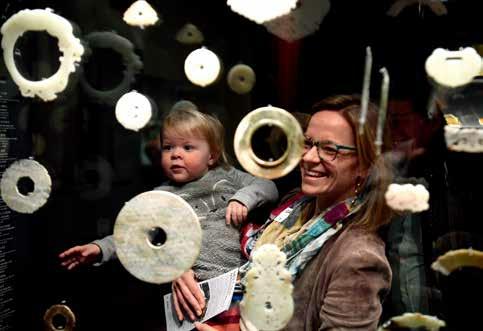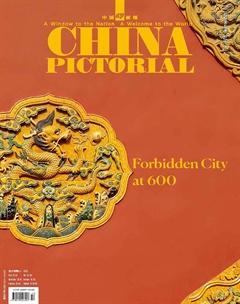Bridges of Art and Culture
by Jay Xu


Emperor Qianlong (1711-1799) of Chinas Qing Dynasty (1644-1911) is widely remembered as one of the most prolific imperial collectors. Apart from being a well-read poet, the emperor was celebrated for his superb taste in antiques and frequent patronage of artists in his times and became known as “the Old Man of Ten Perfections.” Although he lived within the Forbidden City (now the Palace Museum), the largest palace complex in the world, he built cozy studios and salons to enjoy with his treasured collections, which included scholarly accoutrements as well as priceless toys—he was fascinated by miniatures and he cherished intimacy and art on a human scale. In many ways, Emperor Qianlongs idiosyncrasies foreshadowed how museums in the 21st century would seek to engage audiences as places of learning, inspiration, and connection—in concert with art as well as with each other.
The Asian Art Museum of San Francisco has maintained a vibrant relationship with many important Chinese museums since it opened in 1966. Yet our decades-long partnership with the Palace Museum—Emperor Qianlongs former residence—demonstrates how big of an impact a museum today can make through collaboration and exchange on a global scale. The 600th anniversary of the Forbidden City is a perfect moment to take a step forward and celebrate the extraordinary work our two institutions have accomplished together—and contemplate what the future may hold.
The Forbidden City is a familiar icon around the world. However, most Americans are unfamiliar with the Palace Museum, and for them the Forbidden City conjures a distant place that is closed off, remote, refined, and unknown. Likewise, whether classical or modern, Chinese art in the United States is still often considered a rarefied subject. Many hear “Chinese art” and picture only a decorative blue-and-white porcelain vase, an inscrutable landscape painting, or some unreadable calligraphy. “Too niche,” they say, “Too hard.”Reframing that misperception has been a critical aspect of my job since I joined as director of the Asian Art Museum in 2008. As the largest museum in the Americas devoted to Asian art and culture, we have a duty to show how Chinese art has a history of beauty and innovation that can appeal to anybody who walks through our doors. This is a history told exquisitely by the Palace Museum.
For instance, those legendary blue-and-white porcelain vases? Well through multiple joint exhibitions and loans from the Palace Museum, especially the blockbuster “Power & Glory: Court Arts of Chinas Ming Dynasty” (2008), we helped explain how globalization played a role in creating such priceless beauty. The blue in those vases was Iranian cobalt traded along a route reworked by Mongol conquerors, the shape was likely influenced by nomadic tribes drinking pouches, and the delicate floral motifs remind that nature has always touched the human spirit. By partnering with prestigious organizations like the Palace Museum, we can showcase masterpieces never seen before outside Asia while at the same time explaining how the story of Chinese art has long connected to the wider world. Not niche, but now.
This story is, at its heart, one of people working together—connecting to the wider world and with each other through professional interests and personal passions to spotlight the enduring relevance and richness of Chinese culture. Li He, who recently retired as the Asian Art Museums curator of Chinese art, began her illustrious career at the Palace Museum. Her rigorous training there allowed her, over decades, to paint a vivid picture of Chinese history for the Asian Art Museum by tapping into her encyclopedic knowledge of the Palace Museums holdings and forging connections between art, ideas, and personalities separated by hundreds of years as well as a vast ocean.
It was the hard work of bridgebuilders like her that helped bring important Chinese art—and not just from the Palace Museum—to the Asian Art Museum. From presenting the first Chinese blockbuster to show outside Asia since World War II (1975), to a Shanghai Museum exhibition (1983) marking the normalization of China-U.S. relations (as well as the establishment of the San Francisco-Shanghai sistercity affiliation), to one of the first exhibitions of terracotta warriors in the West (1994), to the showcase of tomb treasures from recent Han Dynasty(202 B.C.-220 A.D.) archaeological finds (2017), to the upcoming exhibition on the lost kingdoms of the States of Chu and Zeng of the Zhou Dynasty(1046-256 B.C.) featuring recent archaeological discoveries from Hubei Province, the Asian Art Museum has been an important portal for sharing the historical and living cultures of China. More intimately, our former head of conservation, Kathy Z. Gillis, spent three months in 2018 in Beijing at the Palace Museum as the conservator-in-residence with CRAFT (Conservation Resources for Architectural Interiors, Furniture and Training), a program sponsored by the World Monuments Fund. CRAFT is an educational program designed to meet Chinas conservation needs by pairing conservation work with education and training. Gillis and her students collaborated with artisans using original techniques to restore lost sections of the architectural interiors of the Qianlong Garden buildings. For one project, CRAFT students helped create faux speckled bamboo to replace missing pieces of speckled bamboo, which is no longer plentiful enough to use widely.
That was a perfect example of how our two museums exchange not just art, but also experience—sparking conversation, creativity, and new ideas. How fitting that the legacy of Emperor Qianlong was the direct beneficiary of such exchange. I sincerely hope that study of the historical buildings of the Palace Museum and its legendary collection continues to inspire art enthusiasts, scholars, and the wider world for another 600 years and helps us all find moments of connection that transcend space and time, place and culture.

